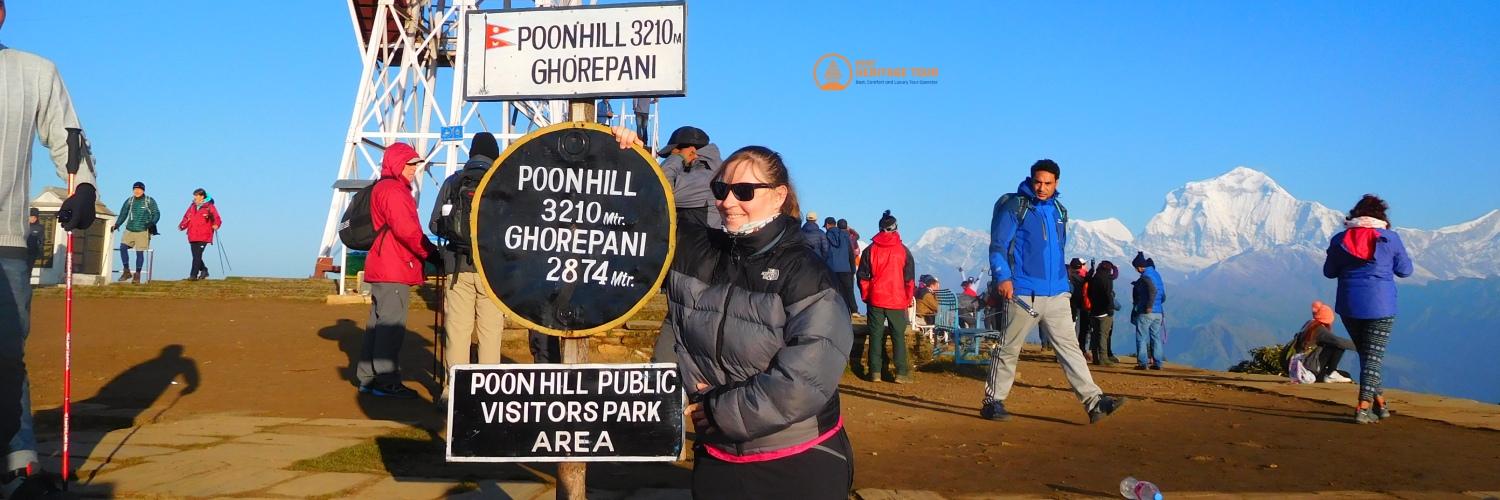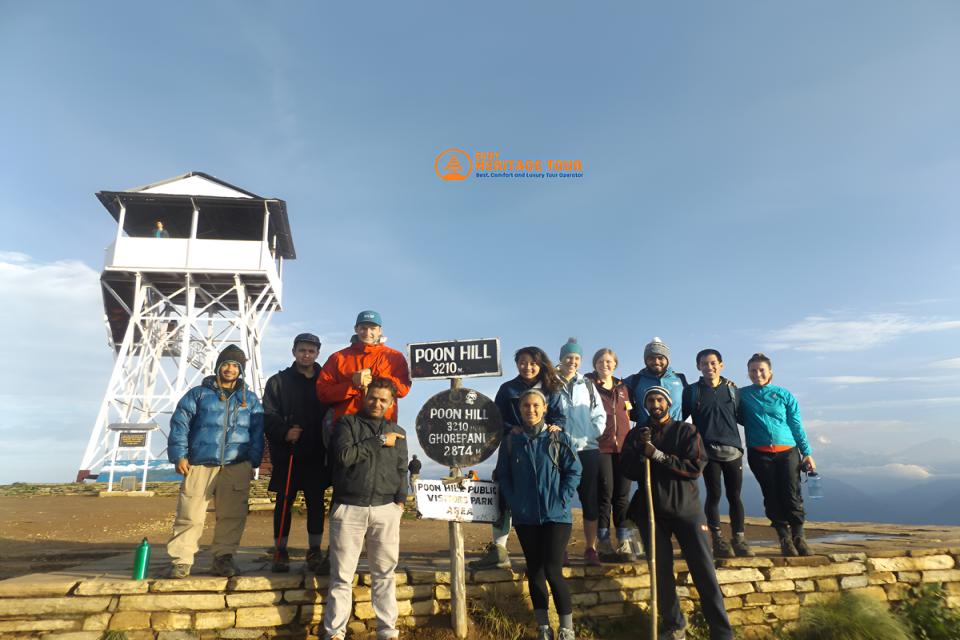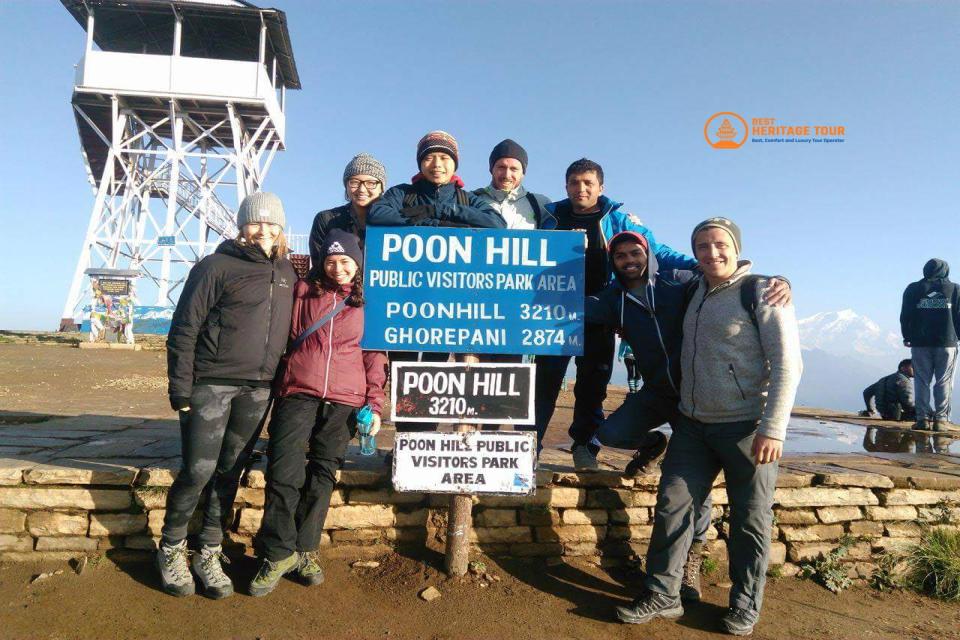The Ghorepani Poon Hill Trek is widely celebrated for its breathtaking Himalayan views, but equally captivating are the rich cultural experiences that unfold along the route. As trekkers traverse the Annapurna region, they pass through traditional Gurung and Magar villages, interact with local communities, and witness centuries-old practices that have shaped life in this remote part of Nepal.
Immersing yourself in these cultural highlights adds depth to the trek, transforming it from a simple mountain journey into an authentic exploration of Nepalese heritage. Travelers who choose Best Heritage Tour not only enjoy expert guidance on the trails but also gain insider access to the customs, stories, and daily lives of the local people.
The Gurung Villages: Tradition and Hospitality
One of the most prominent cultural experiences on the Ghorepani Poon Hill Trek is visiting the Gurung villages. These settlements, with stone houses and slate roofs, reflect centuries of tradition and adaptation to the Himalayan environment. The Gurung people are renowned for their warm hospitality, often inviting trekkers into their homes to share tea, homemade meals, or simply conversation.
Cultural highlights in Gurung villages include:
-
Traditional architecture: Stone houses, wooden carvings, and slate roofing that blend with the surrounding landscape.
-
Handicrafts and textiles: Local weaving and embroidery showcase unique patterns passed down through generations.
-
Festivals and rituals: Trekkers may witness local celebrations such as Tihar or Maghe Sankranti, with traditional dances, songs, and community gatherings.
Interacting with the Gurung community offers travelers a chance to understand their values, lifestyle, and resilience in the face of the harsh mountain environment.
Magar Villages: Guardians of the Hills
Alongside the Gurungs, Magar communities also inhabit parts of the Annapurna region. These villages provide trekkers with a glimpse into another rich cultural lineage. The Magar people are known for their martial traditions, as many serve in the Gurkha regiments, and for their vibrant local folklore.
Key cultural aspects of Magar villages include:
-
Folk music and dance: Drums, flutes, and traditional dances accompany seasonal celebrations.
-
Local cuisine: Unique dishes such as dhido, gundruk reflect local ingredients and culinary traditions.
-
Religious practices: Small temples, shrines, and prayer flags mark spiritual life intertwined with daily routines.
Visiting these villages adds variety and depth to the cultural experience, contrasting with the Gurung lifestyle and showing the diversity within the Annapurna region.
Local Festivals and Ceremonies
The Annapurna region is rich in festivals that are both visually striking and deeply meaningful. Timing your trek with a festival can elevate the cultural experience significantly.
Notable festivals include:
-
Tihar (Festival of Lights): Homes are decorated with oil lamps, garlands, and offerings. Dogs, cows, and even vehicles are celebrated, showcasing the deep connection between humans and animals in local culture.
-
Maghe Sankranti: Marks the winter solstice with rituals for prosperity, often accompanied by traditional foods and dances.
-
Dashain: Though more widespread in the Terai, villages in the hills celebrate with offerings, family gatherings, and animal blessings.
Experiencing these festivals allows trekkers to witness the harmony of community life, the symbolism of rituals, and the joy of shared celebrations.
Spiritual Heritage and Practices
Spirituality is woven into daily life along the trek. From prayer flags fluttering across ridges to small monasteries and chortens, the landscape reflects a deep reverence for nature and the divine.
Cultural insights include:
-
Prayer flags: Colorful flags represent elements and prayers for peace, prosperity, and harmony.
-
Chortens and stupas: Miniature shrines along trails provide travelers with a sense of sacredness and tradition.
-
Local rituals: Villagers often perform small offerings before journeys, harvests, or seasonal changes, emphasizing gratitude and community cohesion.
Guided by Best Heritage Tour, trekkers can gain meaningful explanations of these spiritual practices, adding a layer of understanding to the visual beauty of the trek.
Language and Storytelling
Language is another key cultural element on the Ghorepani Poon Hill Trek. Gurung and Magar communities speak their own languages alongside Nepali. Trekkers often hear traditional songs, folktales, and oral histories shared during village visits or in tea houses.
Highlights of local storytelling:
-
Oral histories: Tales of ancestors, legendary figures, and historical events passed down generations.
-
Folk songs: Sung during festivals, harvests, or evening gatherings, these songs convey moral lessons, humor, and local lore.
-
Interaction with elders: Listening to stories directly from villagers allows trekkers to connect personally with the region’s history.
Understanding language nuances and local expressions deepens the appreciation of cultural richness, making the trek more than just a scenic journey.
Traditional Food and Culinary Culture
Food plays a central role in the cultural landscape of the Annapurna region. While trekking, travelers can taste authentic dishes prepared with local ingredients and techniques.
Cultural culinary highlights include:
-
Dal Bhat: The staple meal of lentil soup, rice, and seasonal vegetables, providing energy for long treks.
-
Gundruk and Kinema: Fermented vegetables and soybeans reflect the local ingenuity in preserving food.
-
Local beverages: Butter tea or millet-based drinks are offered in some villages, connecting visitors to traditional practices.
Sampling these dishes allows trekkers to engage all senses and better understand how local communities sustain themselves in the mountains.
Handicrafts and Art
Alongside food, handicrafts offer insights into local identity and creativity. Trekking through villages, travelers may encounter:
-
Weaving: Woolen shawls, scarves, and blankets with intricate patterns.
-
Wood carving: Traditional motifs adorning doors, windows, and household objects.
-
Prayer wheels and small sculptures: Reflecting religious beliefs and cultural artistry.
Purchasing or observing these crafts not only supports local communities but also provides a tangible connection to their traditions.
Interaction and Cultural Etiquette
To fully appreciate the cultural richness, trekkers should approach interactions respectfully.
-
Ask before photographing villagers or their homes.
-
Greet with a Namaste and smile - it’s the traditional sign of respect.
-
Follow local customs when visiting shrines or participating in rituals.
-
Engage in conversations to learn about daily life, farming, or festivals.
Following these simple practices enriches the trekking experience and fosters positive connections with local communities.
Conclusion - Experience Nepalese Culture with Best Heritage Tour
The Ghorepani Poon Hill Trek is not just a journey through mountains - it is a journey through centuries of culture, tradition, and heritage. From Gurung and Magar villages to local festivals, cuisine, handicrafts, and spiritual practices, every step along the trail offers an opportunity to connect with Nepalese life at its most authentic.
Trekking with Best Heritage Tour ensures travelers not only witness breathtaking landscapes but also gain a deep understanding of the region’s cultural tapestry. Explore, learn, and immerse yourself in the heart of Nepal, creating memories that extend far beyond the mountains.
Phone/WhatsApp/Viber: +977-9851149197
Email: info@bestheritagetour.com / bestheritetour@gmail.com
Website: www.bestheritagetour.com
Office: Thamel Marg, Kathmandu, Nepal
Author: Best Heritage Tour
Date: 15th August, 2025



